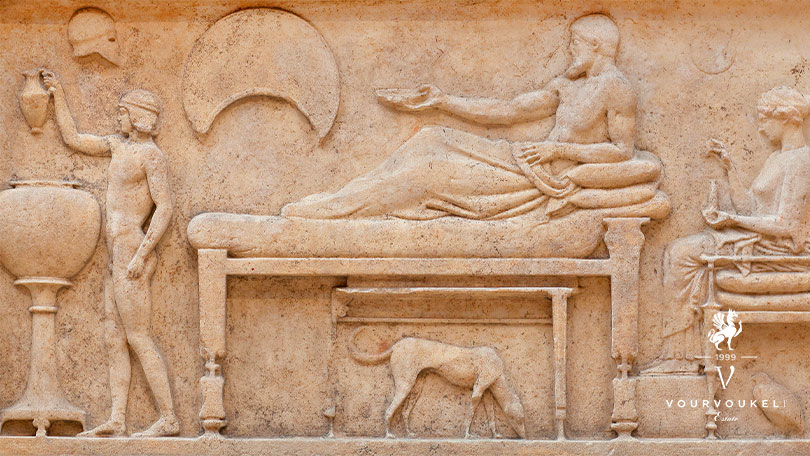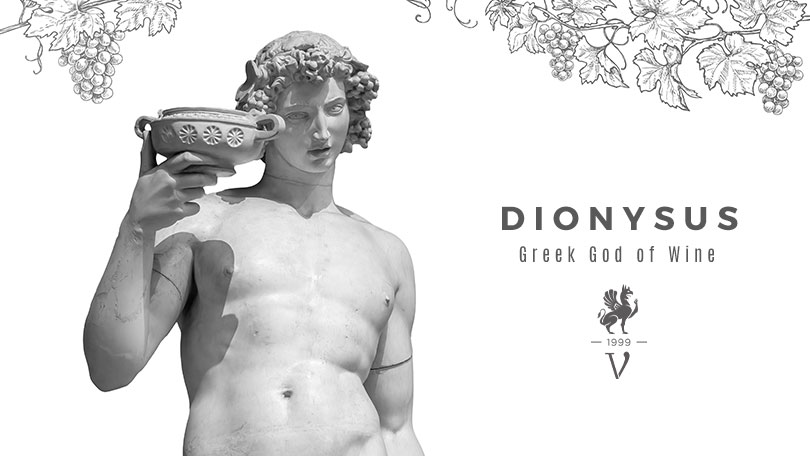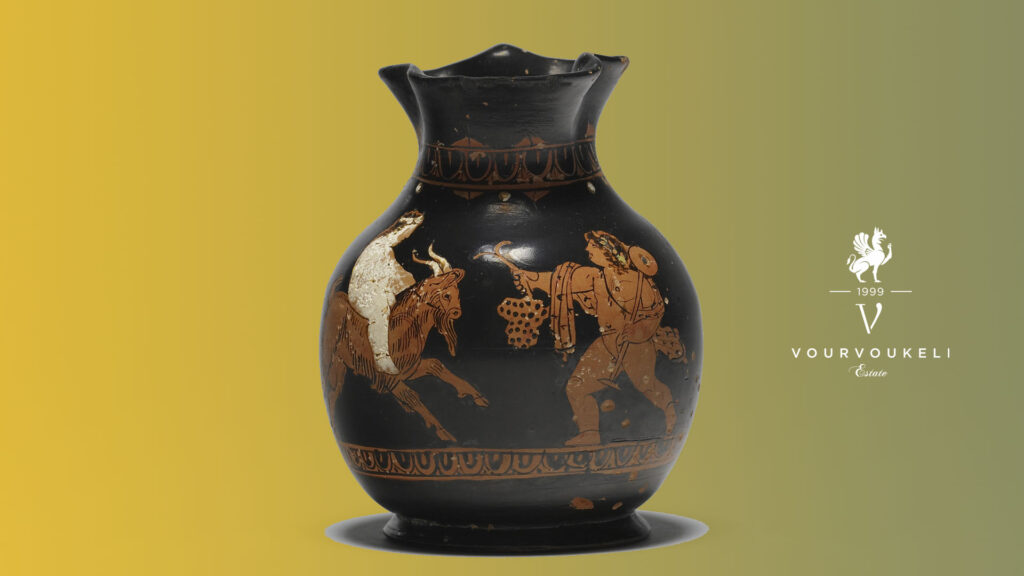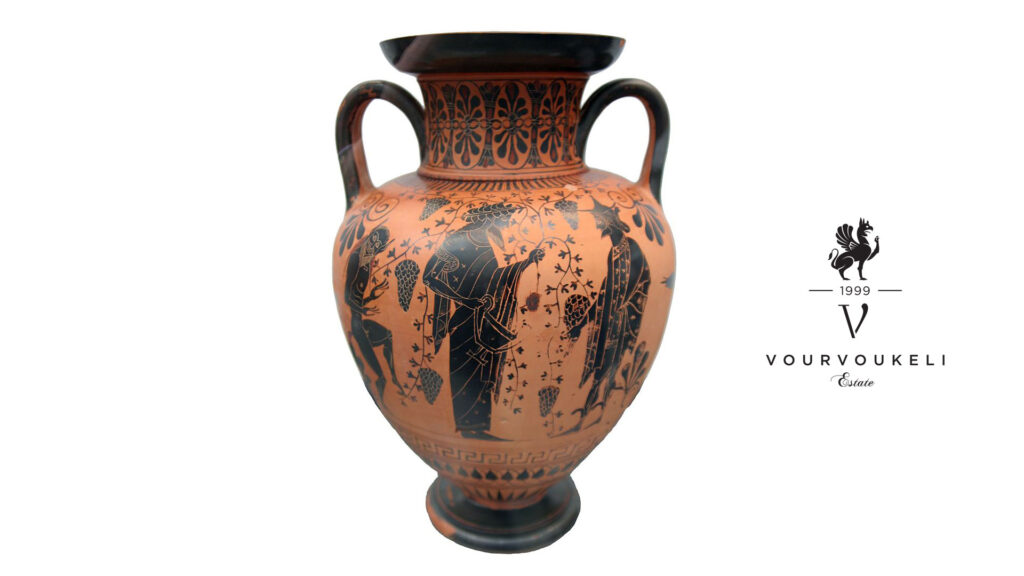The traces of ancient Greek wine are lost in the depth of prehistoric times. In Ancient Greece wine was an important part of the everyday life and rituals. Dionysus was celebrated as the god of wine and ecstasy with “sacrifices” offered to him, the so called “spondes”. Ancient Greeks were considered pioneers in viticulture and production of wine and there are evidences that they exported it to all over the Mediterranean.
References to wine will be found in the work of many ancient Greek philosophers and poets like Homer. From these texts we can understand the mindset of the people of that period about the consumption of wine. The kind of wine ancient Greeks were consuming, the reasons why Dionysus was praised as the god of wine and how this alcoholic beverage was the protagonist in the famous symposia will be discussed below. Following, we will look into the wine cups ancient Greeks were using, as well as the jars they utilize to store their productions.
Types of wine
Ancient Greeks were producing and consuming four kinds of wine: white, black, yellow and red. The white wine was lighter and digestive, while the yellow developed a higher acidity. Black and red wines were usually sweet and they had the biggest demand. Sometimes we will meet additions of herbs and spices in their wines, or salty water, which was used as a conservation component. Wine consumption was engaged during the whole span of the day, since it considered to be beneficial for the health by incorporating healing properties. The combination of wine with food was popular in antiquity.
Islands of the Aegean, such as Chios, Kos, Ikaria and Lesbos had a prestige for the quality of their wines. In Thassos, wines for the first time received the protected designation of origin sign, in order not to be confused with any others.
Dionysus, the Ancient Greek God of wine
In Greece, wine traveled with the Phoenicians, famous merchants of the time. It was introduced to the Mycenaean, Minoan and Cycladic culture around 1700 BC. But, since the myths are far more entertaining than reality, there are two prevailing stories of how wine made its appearance in the ancient Greek territories. In the center of both, of course, is the god Dionysus, a deity that was not included in the initial Gods of Olympus, since at first, ancient Greeks looked down to him for being the synonymous of brutality and wildness.
Dionysus was the son of Semeli and Zeus and according to the legend he was born twice. Hera, famous for expressing her jealousy to Zeus affairs with extreme ways, knew that Semeli was ignoring his divine origins and proceeded with this revelation. Then she urged her to ask for his appearance in his Olympian figure. Since Zeus, committed by divine oath, could not refuse this call, he appeared in front of Semeli as a cluster of thunderstorms, flames and light which led to her death. To rescue Dionysus, Zeus planted him in his thigh from where he was born after three months for a second time. Chased by the hatred of Hera, Dionysus was hidden in the mountain area of Nysa where he was raised by Nymphs. The myth says that when he was young he grabbed a grapevine, ate its fruit and immediately got drunk, carrying away with him his loyal followers, maenads and satyrs.
For years he was wandering in Egypt, Syria, up to India, when he decided to come back to Greece. In his arrival, he introduced viticulture and the procedure of winemaking to the people of Thrace. Thracians and Macedonians were the first to praise Dionysus as a god. In Avdira (where Vourvoukeli Estate is located) there was a Dionysus temple and according to sources the “Dionysia” games were held. His worship included noisy parades, which imposed dancing, hysteria and pure wine. Only in this way the soul could be separated from the body and come into direct contact with the divine.
The second myth is mentioning that Dionysus offered wine as a gift to Ikarios in Athens, to please him for his hospitality. He taught him how to nourish the vineyards and advised him to use the wine wisely. Ikarios didn’t pay attention to his words and started distribute the wine without measure. Two shepherds, dizzy from the alcohol thought that Ikarios was trying to poison them so they killed him and through him in a well. This myth reflects the general idea ancient Greeks had about wine consumption and its affect on people.
How Was Wine Consumed in Ancient Greece?
Ancient philosophers considered wine a necessary accompaniment to their existential and other pursuits during the well-known “symposia” of Athens. In these occasions wine drinking was a mean for pointing out the cultural and social norms established among the political and business actors of every period. They drank their wine diluted with water, as those who consumed wine that has not been watered down were disdained by the society. The ideal dilution was achieved with three parts of water and one part of wine, as we learn from Hesiod. The wine was served in clockwise turns so everybody would drink the same amount.
The cups they were using are evidences of the political, social and economic status of each period. At the beginning only the elite could enter the symposia and wealthy people who were sponsoring the events by engraving their names in the kraters, the bowls used to mix wine with water. From a very simple form of cups, we progressed to black figure pottery production, when the Athenians started to gain political power. The cups were shallow, had two handles and a narrow spout. During the archaic period the democratization of symposia with the participation of the masses, led to the multiplication of the cups. The change from black figures to red, also occurred during this period after the victory of Athens in the Persian Wars. Classical period came with a lot of negative events for the Athenians, such as the plague, which was depicted in the aesthetic appearance of their wine cups. Black clay cups with shiny surfaces prevail and imitate the fancy silver cups of the wealthy, as a move to boost their psychology.
Amphora, the ancient Greek jar for wine
In amphorae, Ancient Greeks were storing and transporting their wines. Amphora was a jar made usually from clay, or sometimes metals like copper. We will find them in slightly different versions. For example, the ones with the pointy bottom were used during transportation, so as to be able to stand when they were immersed into soil, most of the times sand.
Amphorae had an oval body, with a narrow neck to ease pouring wine to individuals’ cups and it could come from no handlers at all, to two or three handlers when their size imposed it. They are quite impressive with elaborate art covering their surfaces, including scenes from everyday life, war depictions or myths. Amphorae are very important for the archeologists, as many times the sealed ones collected from shipwrecks maintain their content unattached.
You may also like:
10 Greek Wine Varieties You Should Try
Limnio, the Ancient Greek Red that is Becoming a Modern Classic




No comments yet. You should be kind and add one!